

White onion, red onion and yellow onion are ancient bulb plants that are easy to grow.
Key facts about Onion:
Name – Allium cepa
Family – Liliaceae (lily family)
Type – perennial, biennial
Height – 30-40 inches (80-100 cm)
Exposure: full sun – Soil: light, drained – Harvest: end of spring → fall
From planting or preparing seedlings all the way to the harvest, you can’t fail in growing them.
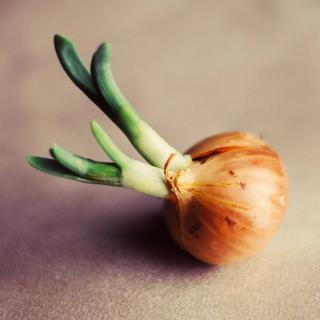 There are two options for you to start growing onions: sowing from seed, or planting small bulbs.
There are two options for you to start growing onions: sowing from seed, or planting small bulbs.
In this case, planting small onion bulbs for them to grow is the most successful of the two, and the simplest to quickly produce beautiful onions.
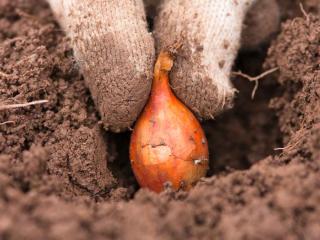 Plant store-bought small onion bulbs at the same time, remembering to bury the bulb about 3 times as deep as the bulb is high. Spacing should be around 4 to 8 inches (10 to 15 cm).
Plant store-bought small onion bulbs at the same time, remembering to bury the bulb about 3 times as deep as the bulb is high. Spacing should be around 4 to 8 inches (10 to 15 cm).Video tutorial for growing onion:
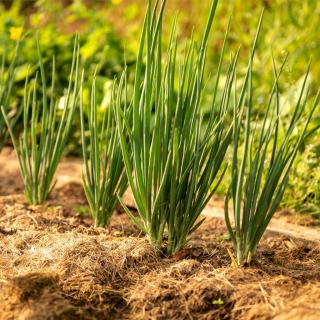 As the season comes along, there’s nothing to do but wait: onions know how to take care of themselves!
As the season comes along, there’s nothing to do but wait: onions know how to take care of themselves!
It helps to provide it with mulch (lawn trimmings are great), so that moisture can stay locked in and the soil remains cooler. Also, mulch increases microbial life in the area underneath, which in turn makes soil much softer.
In hard, dry soil, onion will still manage to grow, but if the soil is softer, it’ll grow faster and fatter. And it will be much easier to pull out when harvest time comes along!
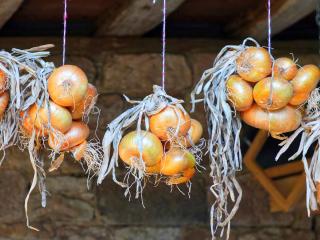 White onions can be harvested earlier, usually in May because they must be harvested before reaching full maturity.
White onions can be harvested earlier, usually in May because they must be harvested before reaching full maturity.
Simply pull them out whenever you need a few, or you can wait until they mature.
If harvested when mature, you’ll have to cure the onions for a couple days. Pull them out and let them dry in the sun while keeping moisture away. Also, store them in a dry and well-ventilated spot.
Summer onions are often eaten raw in salads or to spice a marinade.
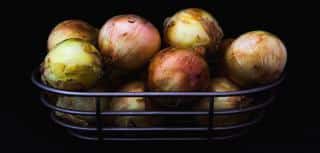 In the case of winter varieties, pull onions out once leaves have yellowed and dried, and, just like the summer varieties, let them cure or dry out in the sun for a few days.
In the case of winter varieties, pull onions out once leaves have yellowed and dried, and, just like the summer varieties, let them cure or dry out in the sun for a few days.
Store away from moisture for as long as you wish, in a cool and ventilated spot.
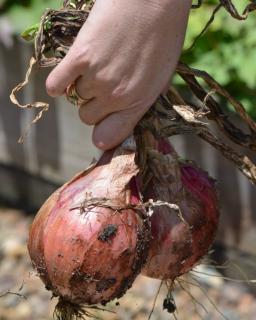 Usually yellow onions are the ones most commonly eaten, but onions can also be white or red.
Usually yellow onions are the ones most commonly eaten, but onions can also be white or red.
The taste differs slightly in each case, red onion being sweeter. Correspondingly, this makes red onion perfect for onion jam or salads. White onion is great for preserves.
Yellow onion is used in most onion-based dishes.
There are lots of types of onion:
And it’s possible to organize your planting so you can have onions all year round!
Avoid rich soils, there is no need for any kind of fertilizer. Also take note that yellow onions keep best if you wish to store them for a while.